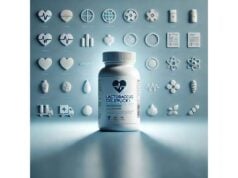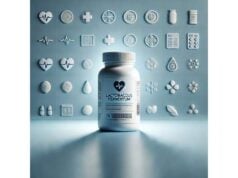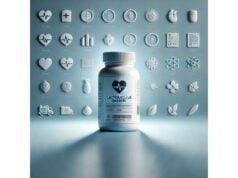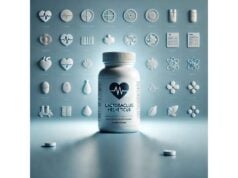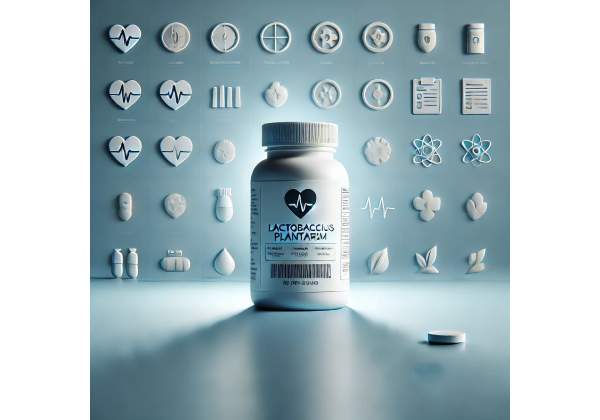
Lactobacillus plantarum (often updated taxonomically as Lactiplantibacillus plantarum) is a versatile probiotic species found in fermented foods like sauerkraut, kimchi, olives, and sourdough. As a supplement, it’s best known for supporting digestive comfort, helping rebalance the gut after stressors such as travel or antibiotics, and contributing to immune resilience. Certain strains—most notably L. plantarum 299v for irritable bowel symptoms and HEAL9 when combined with a companion strain for cold season support—have been examined in randomized trials. Beyond the gut, emerging research explores cardiometabolic markers like cholesterol and blood pressure. This article translates the science into practical steps: how it works, what benefits are realistic, who tends to respond, how to dose (in CFU), and when to be cautious. You’ll also find a short, curated evidence snapshot and clear guidance on choosing products by strain, CFU, and quality. The goal is people-first: precise where it matters, plain-spoken throughout, and focused on decisions you can use today.
Quick Overview
- May ease IBS-related abdominal pain and bloating in some adults; supports seasonal immune resilience.
- Generally well tolerated; rare infection risk exists in severely immunocompromised or critically ill people.
- Typical dosage: 1–20 billion CFU daily for 4–12 weeks; take with food or per label.
- Avoid or seek medical advice if you are immunocompromised, have a central venous catheter, or are critically ill.
Table of Contents
- What is Lactobacillus plantarum and how it works
- Proven benefits: what results to expect
- How to take it: dosage, timing, and forms
- Who benefits most and real-world use cases
- Safety, side effects, and who should avoid
- Evidence snapshot: what studies show
What is Lactobacillus plantarum and how it works
Lactobacillus plantarum is a lactic-acid–producing bacterium naturally present in many fermented foods and in parts of the human gastrointestinal tract. In supplements, it’s delivered as live microorganisms measured in colony-forming units (CFU). Although species-level traits are shared, benefits are strain-specific—coded names such as 299v, K50, or CECT7527/7528/7529 indicate distinct lineages used in clinical research.
Core properties and mechanisms
- Acid and bile tolerance: Survives passage through the stomach and small intestine better than many microbes, helping it reach the colon alive.
- Adhesion and bioactive production: Adheres to intestinal mucus and produces short-chain organic acids (lactic acid) and enzymes that can influence local pH, inhibit some pathogens, and support beneficial microbes.
- Barrier support: May tighten “leaky” junctions between intestinal cells, moderating gut permeability that can contribute to discomfort.
- Immune modulation: Interacts with gut-associated lymphoid tissue. Certain strains nudge immune signaling toward balance—dampening overactive inflammation while preserving frontline defenses against common viruses.
- Bile salt hydrolase activity: Some strains help deconjugate bile acids; paired with other effects, this can modestly influence cholesterol metabolism in select populations.
- Carbohydrate metabolism: Fermentation of fibers and polyphenols yields metabolites that can reduce gas volume, improve stool form for certain individuals, or feed other beneficial microbes.
What makes it different from other probiotics
- Strain diversity: More than a dozen L. plantarum strains appear in consumer products. Unlike broad “multi-strain” blends with unfocused evidence, several L. plantarum strains have strain-level trial data for specific outcomes (e.g., gastrointestinal comfort).
- Food compatibility: It colonizes food matrices well, making it common in fermented foods—useful if you prefer dietary rather than capsule sources.
- Cross-domain relevance: Beyond gut comfort, studies probe cardiometabolic markers and respiratory season resilience when used alone or in targeted combinations.
Limits to keep in mind
- Not all L. plantarum strains deliver the same results; product labels often omit full strain codes.
- Benefits generally require consistent daily use for several weeks; effects recede if you stop.
- In IBS and common-cold prevention, effects are modest on average—valuable to some, negligible to others. Setting realistic expectations is key.
Proven benefits: what results to expect
This section focuses on outcomes supported by human trials, noting where the evidence is strongest and where findings are mixed. Individual response varies widely; consider these as probabilities, not guarantees.
Irritable bowel symptoms (IBS-related pain, bloating, stool patterns)
The strain L. plantarum 299v (DSM 9843) has shown reductions in abdominal pain and bloating over 4 weeks in adults meeting modern diagnostic criteria. Improvements typically emerge by week 2–4 and may include fewer pain episodes and better overall symptom ratings. However, not all studies agree, and a minority of trials report no meaningful effect. Practical translation: for IBS with pain and bloating as dominant symptoms, a 4–8 week trial of 299v at daily doses around 10–20 billion CFU may be worth considering, especially if dietary changes alone have stalled.
Common cold season support (with a companion strain)
L. plantarum HEAL9, when paired with Lacticaseibacillus paracasei 8700:2, has reduced the number of colds and recurring colds across 12 weeks in adults prone to frequent infections, with neutral effects on peak symptom severity. In children, signals are similar but dosing and outcomes differ. Practical translation: during high-exposure seasons, adults who “catch every cold” may see fewer episodes with daily, labeled HEAL9 + 8700:2 for 8–12 weeks.
Cholesterol and triglycerides (select strains and populations)
Mixtures like CECT7527/7528/7529 and strain K50 have shown modest reductions in total cholesterol and triglycerides over ~12 weeks, particularly in adults with elevated baseline lipids. Effects vary and are smaller than prescription agents. Practical translation: if you’re not a candidate for medication or are implementing diet-first strategies, adding a researched strain may contribute incremental improvements—expect small absolute changes and reassess lipids after 12 weeks.
Blood pressure (modest average effect)
Across randomized trials, L. plantarum–containing probiotics have produced small mean reductions in systolic and diastolic blood pressure (on the order of 1–3 mmHg). Some individual strains (including food-delivered variants) show larger drops in select groups. Practical translation: useful as a supportive measure alongside salt reduction, weight management, and exercise—not a replacement for antihypertensive therapy.
General digestive comfort and post-antibiotic support
While broad claims abound, L. plantarum’s most consistent digestive support relates to gas and bloating rather than dramatic changes in stool frequency. For post-antibiotic periods, it may help restore balance, particularly when combined with a diverse fiber intake (oats, legumes, inulin-containing foods).
Oral and skin health (early-stage)
Preliminary data suggest potential benefits for oral microbial balance and skin barrier modulation; however, these areas lack strong, strain-specific human trials. They remain promising but not yet practice-shaping.
Bottom line
Expect subtle to moderate improvements in targeted domains (IBS discomfort, seasonal respiratory resilience with the right partner strain, small lipid and BP shifts). Gains hinge on strain match, sufficient CFU, daily consistency, and alignment with broader habits (diet, sleep, movement).
How to take it: dosage, timing, and forms
Dose ranges and duration
- Everyday digestive support or IBS trial: 10–20 billion CFU once daily for 4–8 weeks; extend to 12 weeks if benefits are emerging but incomplete.
- Cold season support (HEAL9 + 8700:2 combo): Follow label; typical 1–10 billion CFU total daily for 8–12 weeks across the season.
- Lipids or blood pressure adjunct: Strain-dependent; common range 1–10 billion CFU daily for 8–12 weeks, then retest labs or blood pressure.
- Maintenance after improvement: Taper to 5–10 billion CFU daily or use food-based sources several times per week, monitoring symptoms.
Timing with meals
Taking L. plantarum with food—especially a meal containing some fat—often improves survival through stomach acid. If your product specifies otherwise, follow the label.
Single strain vs. blends
- If you’re targeting IBS pain/bloating, consider a clear 299v product first.
- For cold season, look specifically for HEAL9 + 8700:2 and use during the high-risk window.
- For lipids, look for CECT7527/7528/7529 or K50, and pair with dietary patterns known to lower LDL (soluble fiber 5–10 g/day, plant sterols 1.6–2.4 g/day, reduced saturated fat).
Forms and storage
- Capsules/chewables/powders: Choose shelf-stable formulations with best-by dates that guarantee CFU at end of shelf life, not at manufacture.
- Food sources: Sauerkraut, kimchi, kefir, olives, and sourdough may contain L. plantarum, but strain and CFU are unpredictable. Use foods to complement—not replace—supplement trials when you need specific outcomes.
- Refrigeration: Many products are shelf-stable; others require cold. Follow the label and avoid temperature extremes (e.g., hot cars, windowsill heat).
How to evaluate your response
- Define one primary goal (e.g., “reduce bloating from daily to twice weekly”).
- Track for 2–4 weeks using a simple 0–10 symptom scale or a cold-episode log.
- Adjust or switch if no change by week 4; try another researched strain, dose, or timing.
- Layer in fiber (oats, legumes, chia, cooked/cooled potatoes or rice) to feed beneficial microbes and amplify effects.
What not to expect
- Instant results (allow at least 14 days).
- Universal benefits across unrelated symptoms; be selective.
- Durable effects without lifestyle scaffolding (sleep, exercise, whole-food diet).
Who benefits most and real-world use cases
IBS with pain and bloating predominance
Adults who experience recurrent abdominal pain, pressure, and visible bloating often report the clearest changes with 299v when paired with steady meal timing and moderate fermentable fiber intake. People with severe constipation or diarrhea may still benefit, but motility changes are typically secondary to comfort improvements.
Frequent-cold adults during peak season
Teachers, healthcare workers, parents of daycare-aged children, and frequent travelers—especially those with past winters defined by back-to-back colds—fit the profile that responded to the HEAL9 + 8700:2 combination over 12 weeks.
Diet-first lipid improvers
Adults with borderline-elevated LDL or triglycerides who are motivated to adjust diet and activity may see incremental improvements with targeted L. plantarum strains. Expect small absolute changes; the additive value lies in stacking multiple modest levers (soluble fiber, weight loss if indicated, reduced alcohol, and a strain with appropriate evidence).
After antibiotics or travel
When the gut feels unsettled after a course of antibiotics or a trip with dietary changes, a 4–8 week window of L. plantarum alongside fiber and fluids can help restore comfort faster. If symptoms are severe or persistent (fever, bloody stools, signs of dehydration), seek medical care promptly.
When L. plantarum is less likely to help
- Uncontrolled reflux, active inflammatory bowel disease flares, or untreated celiac disease: Address the primary condition first.
- Primarily anxiety-related abdominal discomfort without bowel changes: Cognitive-behavioral strategies, gut-directed hypnotherapy, and dietary adjustments may outperform probiotics alone.
- Severe hyperlipidemia or high cardiovascular risk: Use statins or guideline-directed therapy; probiotics can be adjunctive but not a substitute.
Practical example pathways
- IBS pathway: 299v at 10–20 billion CFU daily with meals for 4 weeks → reassess pain/bloating → extend to 8–12 weeks if improving; if not, consider a different strain or a low-FODMAP trial with professional guidance.
- Cold-season pathway: Start HEAL9 + 8700:2 four weeks before peak season and continue for 12 weeks; emphasize sleep, hand hygiene, and vitamin D adequacy.
- Lipids pathway: Pair CECT7527/7528/7529 or K50 with 8–12 weeks of a high-soluble-fiber eating pattern; check fasting lipids before and after.
Safety, side effects, and who should avoid
Typical tolerance
Most healthy adults tolerate L. plantarum well. The most common reactions are transient gas, softer stools, or mild cramping during the first week as the microbiome and fermentation patterns shift. These effects usually settle within 3–7 days.
Dose and formulation considerations
- Start at the lower end of the intended range (e.g., 5–10 billion CFU) if you are sensitive to dietary changes.
- If you experience persistent bloating after 2 weeks, try taking with the largest meal, spreading the dose twice daily, or switching to a different strain.
Who should avoid or seek medical advice first
- People who are severely immunocompromised (e.g., receiving intensive chemotherapy, with advanced HIV, or post-transplant on high-dose immunosuppression).
- Individuals with central venous catheters, prosthetic heart valves, or a history of probiotic-associated infection.
- Those in critical illness or ICU settings, unless probiotics are prescribed and monitored.
- Infants, toddlers, and pregnant individuals: discuss strain and dose with a clinician (benefit-risk varies by context).
- Anyone with worsening abdominal pain, fever, blood in stool, or dehydration—seek medical evaluation rather than self-managing.
Medication interactions
No direct drug–microbe interactions are typical. Still, space your probiotic 2–3 hours apart from oral antibiotics to reduce kill-off. For immunosuppressants, consult your care team before starting any live microorganisms.
Allergy notes
Check excipients for dairy, soy, or gluten if you have allergies or celiac disease. Many products are free of these, but verification matters.
Quality and contamination
Choose brands that provide:
- Full strain codes (e.g., 299v, HEAL9, K50, CECT7527/7528/7529).
- CFU guaranteed through end of shelf life.
- Third-party testing or quality seals where available.
- Clear storage instructions.
Evidence snapshot: what studies show
IBS symptoms
Randomized trials of L. plantarum 299v (DSM 9843) report improvements in abdominal pain and bloating over 4 weeks in adults meeting Rome criteria, with high patient-rated effectiveness. A minority of studies show no significant benefit, underscoring individual variability, study design differences (e.g., Rome II vs. Rome III criteria), and potential placebo effects. Overall: meaningful for some, modest on average, and worth a well-structured, time-limited trial.
Common colds (adults with frequent episodes)
A large, multi-season randomized trial found a lower number of colds and fewer recurring colds with HEAL9 + 8700:2 over 12 weeks in adults prone to getting colds, while peak symptom severity did not consistently differ. This aligns with an immune-modulating profile that reduces incidence rather than turns severe colds into mild ones.
Lipids
In hypercholesterolemic adults, a 12-week course of CECT7527/7528/7529 yielded double-digit percent reductions in total cholesterol, with notable LDL and oxidized LDL changes in those with higher baseline cholesterol. A separate randomized trial in adults with obesity showed small but significant decreases in total cholesterol and triglycerides with L. plantarum K50. Effects are adjunctive, not a replacement for statins when indicated.
Blood pressure
A systematic review and meta-analysis focused on L. plantarum–containing probiotics found small average reductions in both systolic and diastolic pressure. Some single-strain or food-delivered studies report larger effects, but population-level averages remain modest.
Context and caveats
- Strain specificity is crucial. Extrapolating results from 299v or HEAL9 to unlabeled products is unreliable.
- Duration matters: most benefits appear after 8–12 weeks for lipids and blood pressure, and 4–8 weeks for digestive comfort.
- Lifestyle synergy amplifies gains—especially fiber intake, sleep, and stress management.
Practical takeaway
If you match strain to goal, use adequate CFU, and commit to daily use for a defined period, L. plantarum can be a useful tool in gut comfort, seasonal resilience, and select cardiometabolic markers. Monitor outcomes and pivot if results are flat after the trial window.
References
- Clinical trial: Lactobacillus plantarum 299v (DSM 9843) improves symptoms of irritable bowel syndrome 2012 (RCT)
- Fewer Community-Acquired Colds with Daily Consumption of Lactiplantibacillus plantarum HEAL9 and Lacticaseibacillus paracasei 8700:2. A Randomized, Placebo-Controlled Clinical Trial 2021 (RCT)
- Cholesterol-lowering efficacy of Lactobacillus plantarum CECT 7527, 7528 and 7529 in hypercholesterolaemic adults 2013 (RCT)
- Efficacy and Safety of Lactobacillus plantarum K50 on Lipids in Koreans With Obesity: A Randomized, Double-Blind Controlled Clinical Trial 2022 (RCT)
- Effect of Lactobacillusplantarum containing probiotics on blood pressure: A systematic review and meta-analysis 2020 (Systematic Review)
Disclaimer
This information is educational and does not substitute for personalized medical advice, diagnosis, or treatment. Always talk with your healthcare professional before starting any new supplement, especially if you have a medical condition, take prescription medications, are pregnant or nursing, or are immunocompromised. If you develop concerning symptoms—such as fever, severe abdominal pain, blood in stool, chest pain, or shortness of breath—seek medical care promptly.
If you found this guide helpful, please consider sharing it on Facebook, X, or your preferred platform, and follow us for future updates. Your support helps us continue producing high-quality, evidence-informed content.



